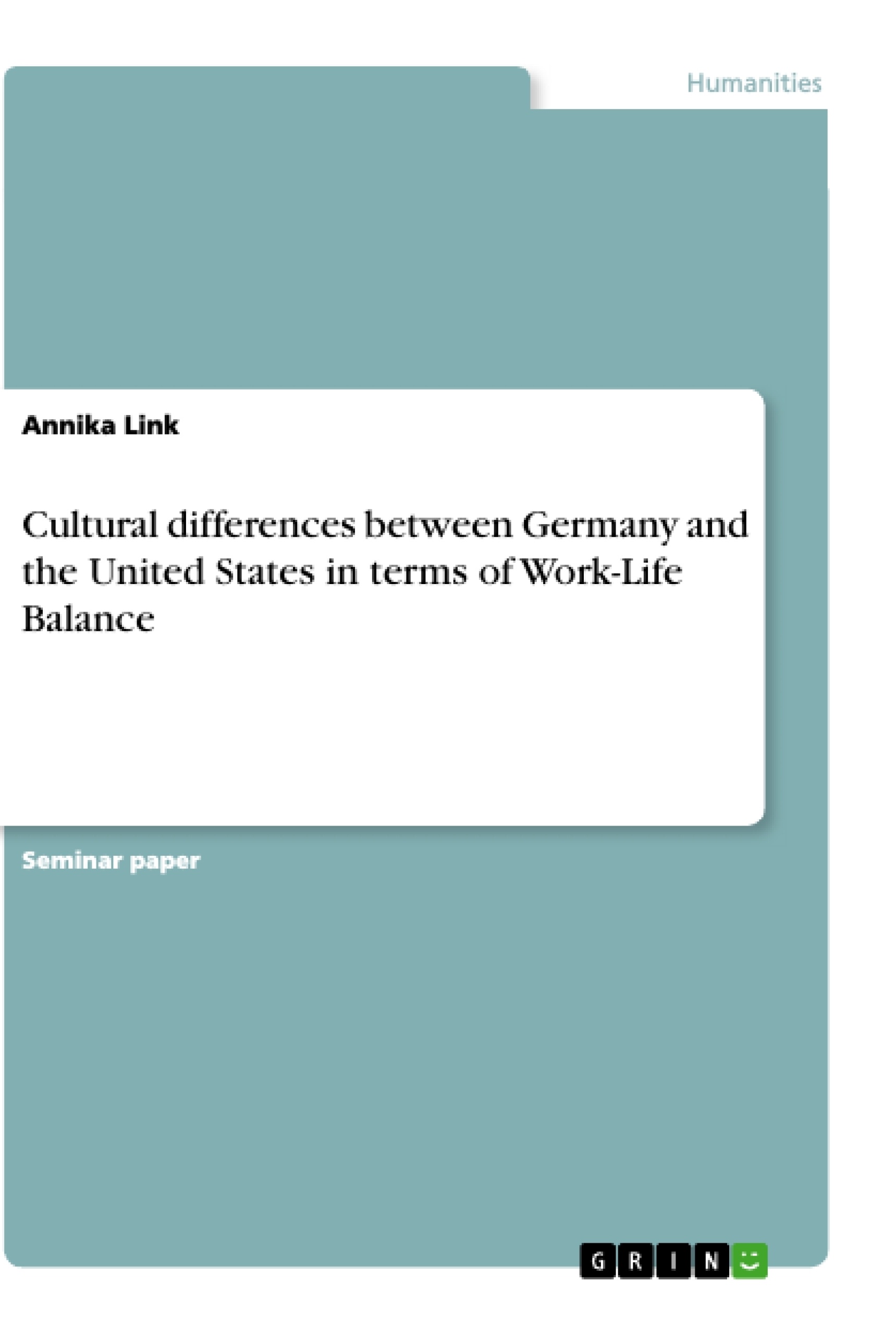Traditional role models suggest that the focus of man is primarily on professional life, the focus of woman is primarily on the family. In modern days, the roles of men and women are largely interwoven. Changes in gender roles, demographic changes, a variety of employment patterns as well as new technologies are creating new socio-political challenges.
An other important factor is the increasind globalisation of companyies which requires that people from different cultures work together. In order to achieve a smooth workflow, it is necessary to maintain cultural competences. For employees, this represents a further demand in their professional life.
Table of Contents
- 1 Introduction
- 2 Culture
- 2.1 Cultural Dimensions of Hofstede
- 2.2 Comparison between Germany and the United States
- 2.2.1 Power Distance
- 2.2.2 Masculinity versus Femininity
- 2.2.3 Long-term versus Short-term Orientation
- 2.2.4 Indulgence versus Restraint
- 2.3 Culture Dimensions of Trompenaars
- 2.3.1 Specific versus Diffuse
- 3 Work-Life Balance
- 3.1 Definition
- 3.2 Work-Life Balance in Germany
- 3.3 Work-Life Balance in the US
- 4 Conclusion
- 5 References
Objectives and Key Themes
This paper aims to analyze and present cultural differences in work-life balance between Germany and the United States. The study explores measures taken by both countries to promote a healthy balance between work and leisure time. It discusses the influence of cultural dimensions on work-life balance and emphasizes the importance of cultural competence in today's globalized work environment.
- Cultural differences between Germany and the United States
- Impact of cultural dimensions on work-life balance
- Importance of cultural competence in a globalized workforce
- Measures taken to promote work-life balance in Germany and the United States
- The significance of a balanced work-life for individual well-being and company success
Chapter Summaries
The first chapter introduces the concept of culture and explores cultural differences using the models of Geert Hofstede and Fons Trompenaars. It focuses on Hofstede's six dimensions and applies them to Germany and the United States, revealing similarities and differences between national cultures. The chapter also examines Trompenaars' dimension of diffuse and specific communication. The second chapter delves into the concept of "work-life balance" and its implementation in Germany and the United States. It analyzes the challenges and opportunities associated with balancing work and personal life in both countries.
Keywords
The main keywords and focus topics of this paper include work-life balance, cultural differences, Germany, United States, Hofstede's cultural dimensions, Trompenaars' cultural dimensions, globalized workforce, cultural competence, and stress management.
- Quote paper
- Annika Link (Author), 2019, Cultural differences between Germany and the United States in terms of Work-Life Balance, Munich, GRIN Verlag, https://www.grin.com/document/491951




